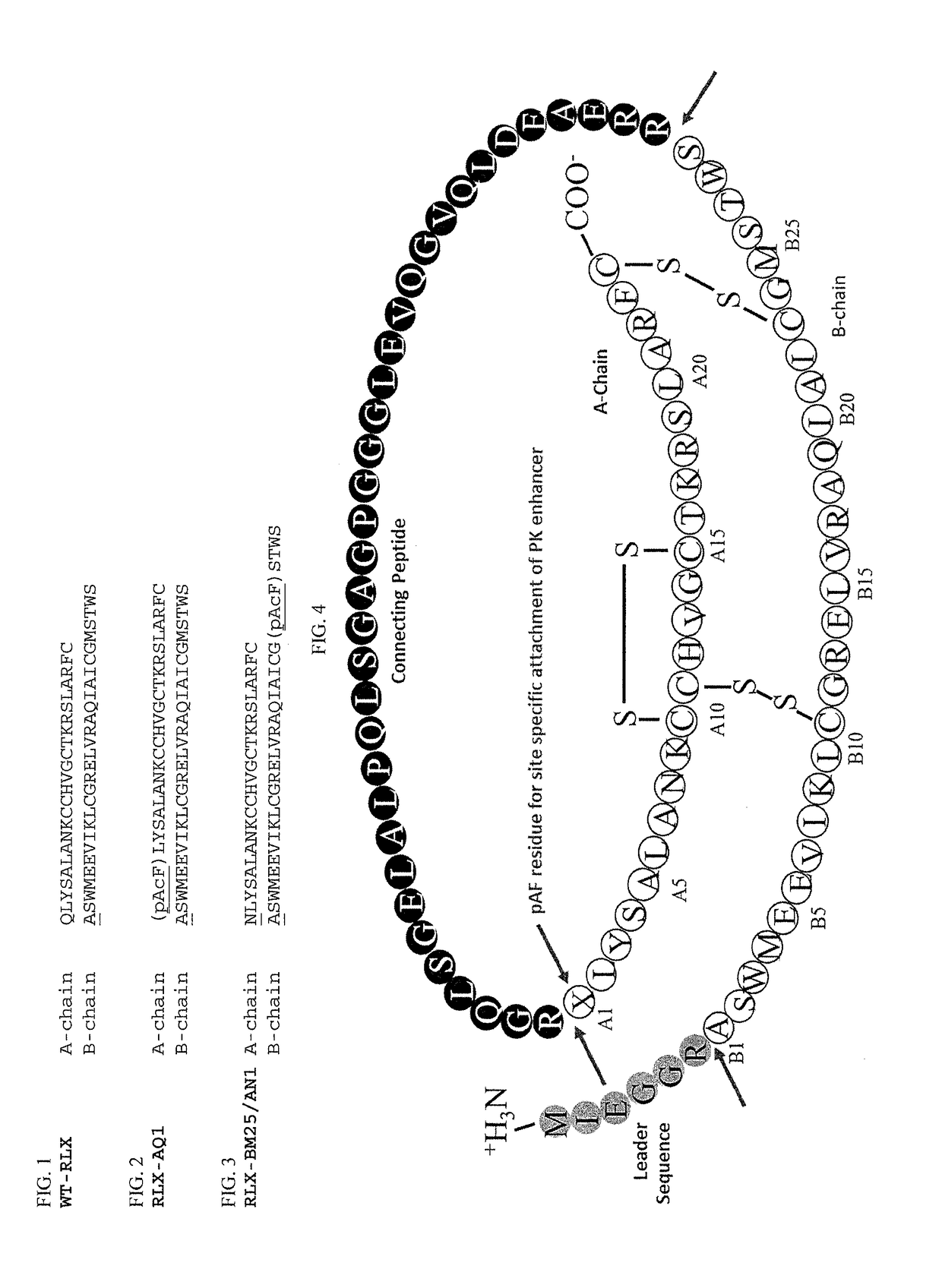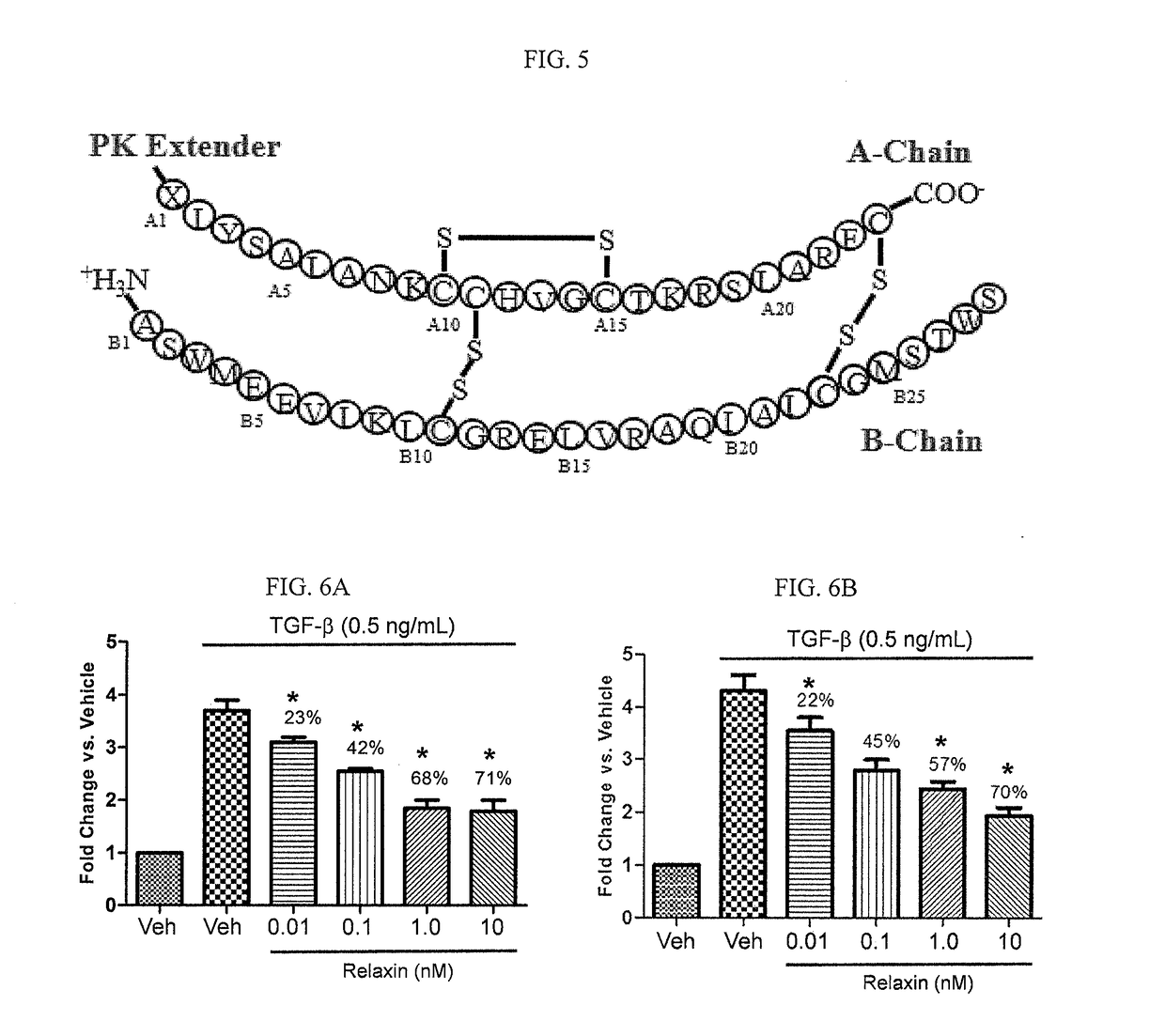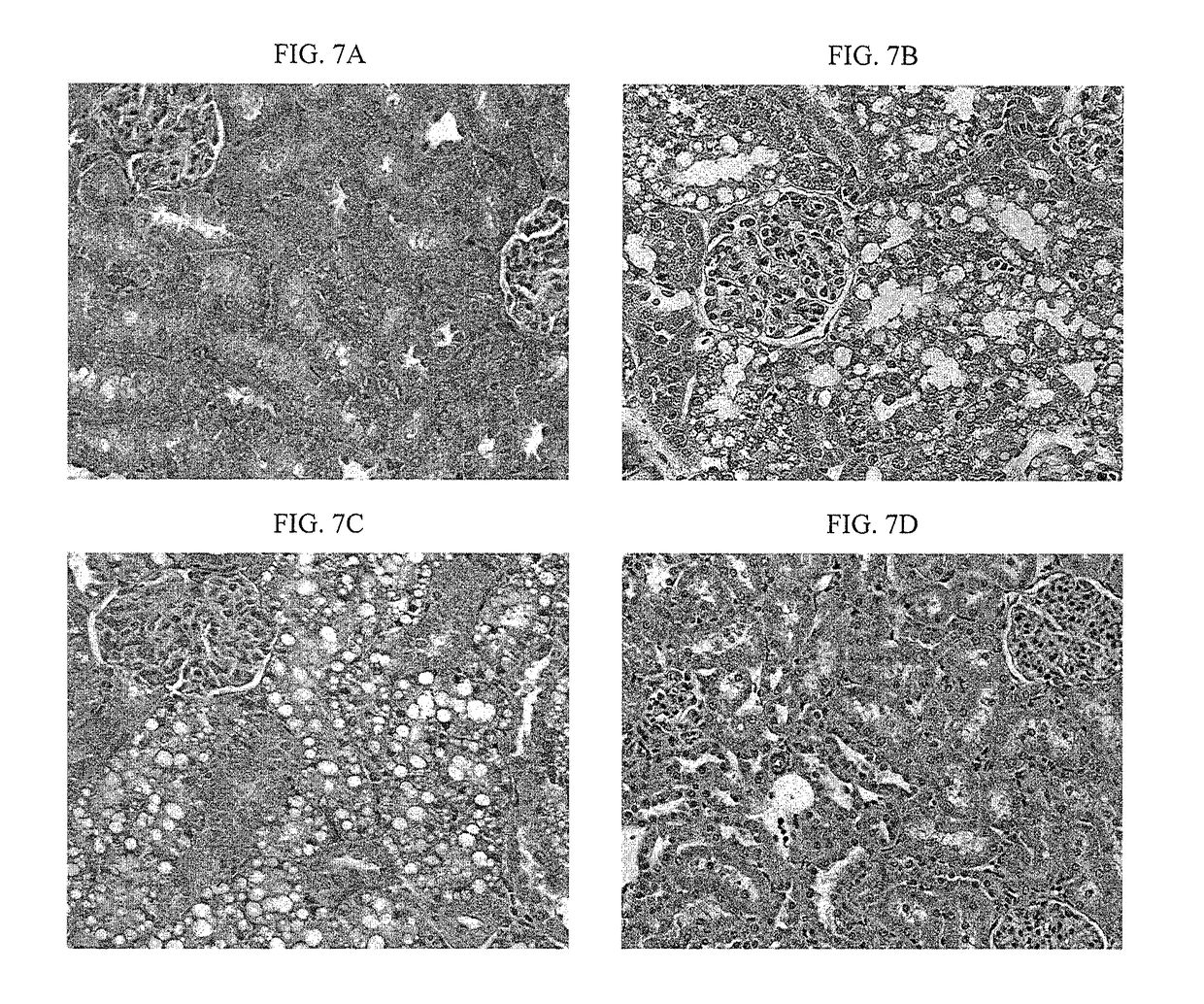Modified relaxin polypeptides comprising a pharmacokinetic enhancer and uses thereof
a technology of relaxin and enhancer, which is applied in the direction of peptide/protein ingredients, drug compositions, metabolic disorders, etc., can solve the problems of insufficient cardiac output and heart failure clearly presenting a significant unmet medical need
- Summary
- Abstract
- Description
- Claims
- Application Information
AI Technical Summary
Benefits of technology
Problems solved by technology
Method used
Image
Examples
example 1
Incorporate of a Non-Naturally Encoded Amino Acid into PreproRelaxin
[0302]This example exemplifies cloning and expression of a relaxin polypeptide including a non-naturally encoded amino acid in E. coli.
[0303]Methods for cloning relaxin are known to those of ordinary skill in the art. Polypeptide and polynucleotide sequences for relaxin and cloning of relaxin into host cells are detailed in U.S. Pat. No. 4,758,516; U.S. Pat. No. 5,166,191; U.S. Pat. Nos. 5,179,195, 5,945,402; and 5,759,807; all of which patents are herein incorporated by reference.
[0304]cDNA encoding relaxin is shown as SEQ ID NO: 12 and the mature polypeptide amino acid sequence is shown as SEQ ID NO: 1. Exemplary relaxin sequences are provided in Table 1.
TABLE 1Relaxin SequencesSEQIDNO:Sequence NameSequence 1Relaxin amino acidQLYSALANKCCHVGCTKRSLARFCsequence (A and BDSWMEEVIKLCGRELVRAQIAICGMSTWSchains) 2Relaxin amino acidQLYSALANKCCHVGCTKRSLARFCsequence B1 Ala (A andASWMEEVIKLCGRELVRAQIAICGMSTWSB chains) 3Exempla...
example 2
n and Purification of Mature Relaxin Containing a Non-Naturally Encoded Amino Acid
[0311]PreproRelaxin (SEQ ID NO: 38 with pAcF at A chain residue 1, see FIG. 4) was produced by fermentation in E. coli cells as inclusion bodies. The non-naturally encoded amino acid para-acetyl-phenylalanine was ribosomally incorporated using the general methods provided in Example 1.
[0312]E. coli cells containing the plasmid expressing modified relaxin polypeptide were grown in a fermentor containing fermentation medium. Kanamycin was added to the fermentor to promote plasmid stability. L-alanine-L-para-acetylphenylalanine hydrochloride (L-Ala-pAcF) was added to the fermentor to enable incorporation of p-acetylphenylalanine (pAcF) in the PreproRelaxin amino acid sequence. Finally, L-arabinose was added to induce PreproRelaxin expression. The PreproRelaxin produced inside the cells resulted in the formation of insoluble inclusion bodies (IBs). The fermentation broth was harvested after a post-inductio...
example 3
on of Relaxin to PK Enhancer Comprising a Peptide Linked to a Fatty Acid
[0319]The purified Relaxin was concentrated by ultrafiltration to approximately 10 mg / mL. Aminooxy activated PK enhancer comprising a peptide and a C15 fatty acid (e.g., GGGGS-Gluγ (SEQ ID NO: 139)-C14-COOH) was added to the reaction mixture at a 1.5 molar excess over Relaxin. A hydrazide additive (i.e. 4 amino-benzoichydrazide) was then added at a 45 molar excess over Relaxin. The solution was adjusted as needed with 1 M HCl to maintain a pH between 3.5 and 4.0 and the temperature was controlled at 30° C. The conjugation reaction formed a stable oxime bond between the peptide linker linked to a C15 fatty acid (e.g., GGGGS-Gluγ (SEQ ID NO: 139)-C14-COOH), as prepared following the procedure described in Example 4, and the para-acetyl-phenylalanine residue in Relaxin. The reaction was complete within 16 hours.
[0320]The conjugation reaction mixture was diluted to γ (SEQ ID NO: 139)-C14-COOH) was then eluted with 5...
PUM
| Property | Measurement | Unit |
|---|---|---|
| pH | aaaaa | aaaaa |
| molecular weights | aaaaa | aaaaa |
| molecular weights | aaaaa | aaaaa |
Abstract
Description
Claims
Application Information
 Login to View More
Login to View More - R&D
- Intellectual Property
- Life Sciences
- Materials
- Tech Scout
- Unparalleled Data Quality
- Higher Quality Content
- 60% Fewer Hallucinations
Browse by: Latest US Patents, China's latest patents, Technical Efficacy Thesaurus, Application Domain, Technology Topic, Popular Technical Reports.
© 2025 PatSnap. All rights reserved.Legal|Privacy policy|Modern Slavery Act Transparency Statement|Sitemap|About US| Contact US: help@patsnap.com



